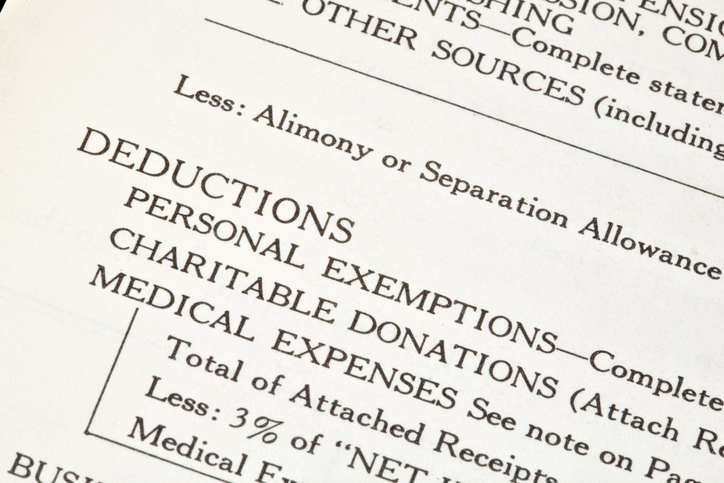Here’s a highlight of what we perceived as important based on the calls we’ve been getting.
We have posted the link to the SBA Economic Injury Disaster Loan and attached the application for Payday Protection Program on our resource page.

- Recovery Rebates for Individuals – CARES provides direct rebates of up to $1,200 for each qualified adult ($2,400 for married couples) and $500 per child. The full rebate amount is available if you have income at or below $75,000 ($150,000 for married couples), phases out as income increases and is capped with income above $99,000 ($198,000 for married couples). The money should be directly deposited into your account by late April.
- Pandemic Unemployment Insurance – CARES expands existing state-level unemployment insurance benefits for individuals by the Corona economic downturn. It adds $600 per week to existing state-level benefits through the end of July. For those in need, CARES provides an extra 13 weeks of benefits beyond what states usually permit. Pandemic Unemployment Assistance will even cover many who were typically excluded from a state’s program like independent contractors, free lancers, self-employed individuals, “gig” workers (i.e. Lyft or Uber drivers) and even those laid off from religious institutions. It will not be available to those who are compensated for working remotely or are receiving paid leave.
- Retirement Plans – CARES waives the normally imposed 10% penalty for premature withdrawals from retirement accounts up to $100,000 and permits 3 years for repayment. If not repaid, income is spread over 3 years. The limit of $50,000 for loans from qualified loans is increased to $100,000. Required Minimum Distributions are suspended for 2020.
- Student Loans – CARES defers payments on federal student loans through September 30, 2020. Employer payments on employee student loans is a tax-free fringe benefit for 2020 (not to exceed $5,250 decreased by other educational assistance programs).
- Net Operating Loss Changes – The tax act passed at the end of 2017 eliminated a taxpayer’s ability to carry back an NOL, only to be carried forward (indefinitely) and, even then, limited to 80% of income. For tax years beginning before 1/1/2021, the CARES Act will now allow net operating losses to be carried BACK to offset 100% of income for the prior 5 years (i.e. 2013 thru 2017). YOU SHOULD CONSIDER HAVING US FILE AN AMENDED RETURN FOR BACK TO 2013 TO CLAIM AND RECEIVE A POSSIBLE TAX REFUND. The Act also allows NOLs stemming from tax years beginning after 12/31/2020 to offset 100% of income going forward rather than 80% limitation.
- Employee Retention Credit – CARES provides employers subject to disruption due to COVID-19 by helping to continue paying employees. Any size employer may be eligible for a 50% refundable tax credit of up to $10,000 of wages plus health insurance paid per eligible employee. Qualified employers will access the funds via a payroll tax credit. The enterprise must have been disrupted by COVID-19 enough to effectively cause a loss of 50% of revenue from the same quarter of the prior year. The retention credit ends when revenue increases to at least 80% of what the business earned in a comparable quarter of the prior year. We found an answer to one question posed – employers are NOT eligible for the credit if they receive a small business loan pursuant to the CARES Act.
- Payroll Tax Payments – CARES permits employers of any size, even sole proprietors, to delay payment of their 2020 payroll taxes until 2021 and 2022. 50% of the 2020 payments will be due in 2021, and the balance will be due in 2022. Keep in mind, FICA taxes are imposed on both employers and employees’ wages at a rate of 6.2% for the Social Security tax and 1.45% for the Medicare Tax. Self-employed individuals pay a corresponding self-employment tax effectively twice that amount. The CARES Act allows an employer to defer the employer portion of the social security tax.
- Increased Incentives for Charitable Contributions – The CARES Act attempts to get funds to charitable organizations quickly by allowing both individuals and businesses to claim increased deductions for all cash contributions. Since we’ve so many people now taking the standard deduction, the Act permits an “above the line” deduction of up to $300 during 2020. Limitations for 2020 are relaxed so that individuals can take an itemized deduction for cash contributions of up to 100% of their gross income while corporations can deduct up to 25% of its taxable income. We understand donor advised funds or private foundations do not qualify for these laxed limitations for 2020. Perhaps limited applicability but a pretty neat item for our restaurant/food related clients is that the Act increases the allowable deduction for contribution of food inventory by business made during 2020.
- Paycheck Protection Program – CARES enable employers (including self-employed individuals) with less than 500 employees to participate in an 8-week loan program for up to 250% of the monthly payroll brought about by the economic uncertainty as long as they maintain their payroll during this COVID-19 emergency. These loans will be made available through Commercial Banks that are authorized SBA lenders on April 3, 2020. No personal guaranties or collateral are required on these non-recourse loans. As long as the employer maintains payroll, there is forgiveness available for the portion of the loans used for covered payroll costs, interest (not principal) on mortgage loans, utilities and interest on any other debt obligations incurred before the covered period. The maximum payroll is $10,000,000 while the loan amount is limited to $100,000 annualized per employee, including wages, vacation, parental, medical, family or sick leave, retirement benefits, tips, health care benefits, etc. Seasonal businesses should calculate the 2.5 months’ payroll using the 12-week period beginning Feb. 15, 2019. Alternatively, the business may choose the period beginning March 1, 2019, and ending June 30, 2019. Seasonal businesses will multiply this average by 2.5. Employers cannot cut employees’ pay by more than 25%. In order to bring back on payroll employees that may have already been furloughed, this loan program is retroactive back to February 15, 2020. The program removes the “Credit Elsewhere Test,” which usually required an extensive analysis to determine whether the borrower had the ability to obtain some or all of the requested loan funds from alternative sources, without causing undue hardship. That test could also have required them to utilize those alternative sources first before trying to obtain the SBA loan.
- While the CARES Act includes loan forgiveness, please take note of how much of any such loan will be eligible for forgiveness. The law refers to the “covered period” meaning the 8-week period starting at the date of the origination of the loan. Loan recipients are eligible for a certain amount of forgiveness but the forgiveness is reduced if the employer reduces its workforce during the 8-week covered period when compared to other periods in 2019 and 2020, or reduces employee salaries by more than 25% during the covered period. These reductions can be avoided when an employer rehires employees and increases pay during the given time period.
- The loans have a maximum maturity of 10 years with interest rates for any portion of the loan that is not forgiven not to exceed 4%. Lenders are required to give borrowers a complete payment deferral on all principal, interest and fees of not less than 6 months and not more than 1 year on all loans under CARES.
- Economic Injury Disaster Loan – Small business owners in all U.S. states, Washington D.C., and territories are eligible to apply for an Economic Injury Disaster Loan advance of up to $10,000. This advance will provide economic relief to businesses that are currently experiencing a temporary loss of revenue. Funds will be made available following a successful application. This loan advance will not have to be repaid. A link to apply for the loan online is on our website resource page.
- Please note that any business that receives an Economic Injury Disaster Loan under Section 7(b) of the Small Business Act must reduce the amount received from CARES’ Payroll Protection Program loan.
If you have any questions please call Gregory J. Spadea at 610-521-0604.












